









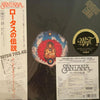
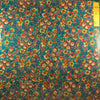
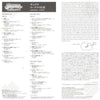
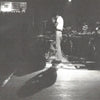
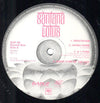
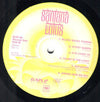
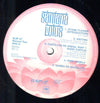
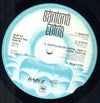
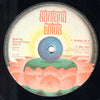
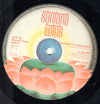
Santana – Lotus (3LP, Ultra Analog, Half-speed Mastering, Japanese edition)
ORDER LIMITED TO ONE ITEM PER CUSTOMER
Lead Guitar – Carlos Santana [click here to see more vinyl featuring Carlos Santana]
Vocals – Leon Thomas
Bass – Doug Rauch
Drums – Michael Shrieve
Keyboards – Richard Kermode, Tom Coster
Percussion – Armando Peraza, José "Chepito" Areas
3 LPs, gatefold jacket
Limited edition
Original Master tape : high-definition DSD 11.2MHz master
Half-speed Mastering
Gain 2™ Ultra Analog
Heavy Press : 180g
Record color : black
Speed : 33RPM
Size : 12”
Stereo
Live
Record Press : Sony Japan
Label : Mofi
Original Label : CBS
Recorded live at Kosei Nenkin Hall, Osaka, Japan on Jul. 3 & 4, 1973
Produced by Carlos Santana, Richard Kermode, Michael Shrieve, Doug Rauch, Tom Coster, Armando PerazaJosé Areas
Remastered at Mobile Fidelity Sound Lab
Lacquer cut at Mobile Fidelity Sound Lab by Krieg Wunderlich
Originally released in May 1974 (Japan), Nov. 1975 (Europe), June 1991 (U.S.)
Reissued in 2015
Tracks:
Side A:
- Meditation
- Going Home
- A-1 Funk
- Every Step Of The Way
Side B:
- Black Magic Woman
- Gypsy Queen
- Oye Como Va
- Yours Is The Light
- Batukada
- Xibaba (She-Ba-Ba)
Side C:
- Stone Flower (Introduction)
- Waiting
- Castillos De Arena, Part 1 (Sand Castle)
- Free Angela
- Samba De Sausalito
Side D:
- Mantra
- Kyoto (Drum Solo)
- Castillos De Arena, Part 2 (Sand Castle)
- Se A Cabo
Side E:
- Samba Pa Ti
- Mr. Udo
- Toussaint L'Overture
Side F:
- Incident At Neshabur
- Savor
- Conga Solo
Reviews :
“Recorded in Japan in July 1973, this massive, three-LP live album was available outside the United States in 1974 but held back from domestic release in the U.S. It features the same "New Santana Band" that recorded Welcome, and combines that group's jazz and spiritual influences with performances of earlier Latin rock favorites like "Oye Como Va."” AllMusic Review by William Ruhlmann
“This triple live album originally recorded in in Osaka, Japan over two night in early July 73, was intended as a Japan-only release, but soon found its way worlwide as an import, as far as vinyls are concerned, something that stopped with the Cd re-issue. For the rest of the world, Moonflower was released in 76 instead, and it was a strange mix of live and studio tracks, and it has its charms as well. Lotus catches the Santana band between its two more or less stable period, as there are still embers of the first line-up, and not everyone of the second period (Amigos) is there yet. Coming in with a very elaborate fold out artwork, this album rivals with Yes’ Yessongs in terms of number f discs (3 each) and complex artwork, only to be topped by Chicago’s quadruple Carnegie boxset. As usual in that hippie era, the artwork of the band is slightly esoteric, mainly due to Carlos’ Yogi enrolment and while the illustrations are quite kitsch, they’ll not likely convert anyone either.
Starting with a Japanese introduction, the group licks with a homage to Alice Coltrane with a wurlitzer and a wink to the Illuminations album. The,n plunging into the ecstatic 12-minutes finale of Caranserai, one wonders if Santana is not laying down its trumps too early in the game, but which fan is not won over by these early sure-fire numbers. Then the band pulls out even more sure crowd favorites like the trio Magic:Gypsy and Como tracks from the Abraxas album.... After Yours Is The Light (Welcome) and a few more less remarkable number, the group launches into an adventurous medley (normaly taking up the whole second vinyl disc) of tracks with Casilleros jumping into Free Angela (Davis) and Sausalito and a then unreleased antra track (now a very-welcome bonus on the Welcome album), showing that Santana is not only extremely tight, but loves tricky and complex times sigs and great jazz-rock solos.
The second disc offers the end of the Castillos De Arena medley opassing through a 10-minutes drum solo (the album’s only weak point, really) in superb fireworks of notes from the whole group. A second set of three Abraxas tracks, including the much expanded Accident At Neshabur and Samba Pa Ti come in to close the set, before the encores including an explosive Toussaint from their third album.
In Lotus, we’ve got Santana at their near-best and Lotus is now a 2 Cd set that must be considered the most essential live Santana along with the 68 Fillmore. The only flaw of this album is that it doesn’t offer double thes pace to put everything else we’d love to hear from Carlos’boys, includinf Jingo, more Caravanserai and some Borboletta (almost forgotten here)” Sean Trane, Jazz Music Archives, April 2011
Ultra Analog™ : The GAIN 2 Ultra Analog™ Series stems from the use of the Gain 2 system, mastered at half speed from the original master tapes where possible, capturing and uncovering as before undiscovered sonic information.
Half-speed mastering. In half-speed mastering, the whole process is slowed down to half of the original speed. A typical 33 1/3 rpm record is cut at 16 2/3 rpm. The source material is also slowed down (reducing the pitch in the process) meaning the final record will still sound normal when played back. Slowing the whole process down allows more time, which means the end result sounds better and is more efficient — allowing engineering to minimize the effects of inherent limitations within the vinyl format. The result is a more accurate and more open high-frequency response in the half speed vinyl when compared with a normal speed recording.
Ratings :
AllMusic : 4.5 / 5 , Discogs : 4.6 / 5



